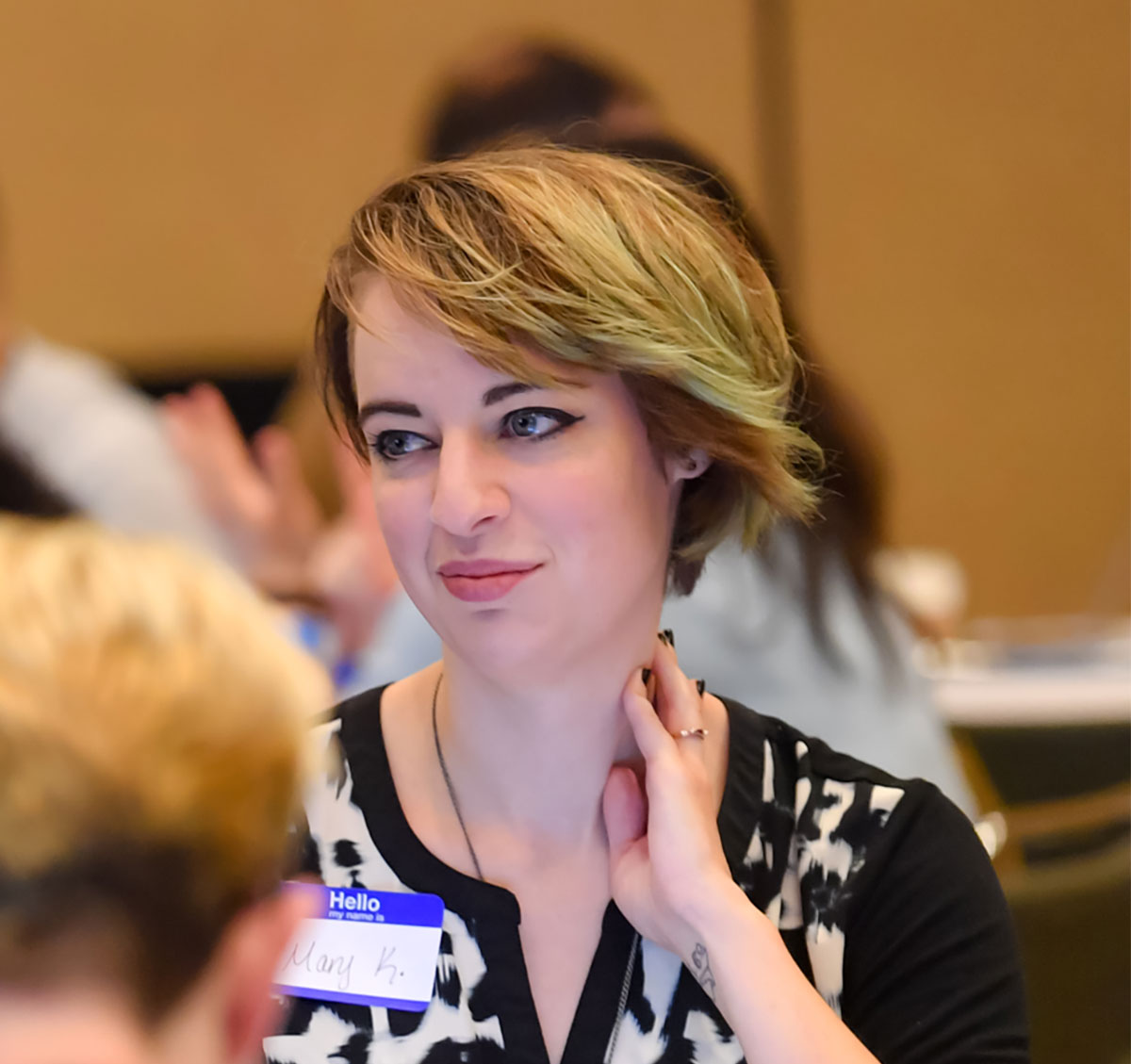The characters in journalist Mary Kenney’s stories were real people: Chie Arimura, a 25-year-old Japanese golfer who faced loneliness as a foreign member of the LPGA tour; Bettye Hill, a one-time vice president of Oshkosh Corporation who safeguarded the company’s ethical culture and code of conduct.
But game writer Mary Kenney’s characters include Batman, working alongside a mysterious government agency to defeat a villain group known as “the Pact” from within; and Clemetine of “The Walking Dead,” rescuing AJ from the McCaroll Ranch and teaching him to survive in the post-apocalypse.
Kenney, BAJ’13, is a newspaper reporter-turned-video game writer. At the core of all of her work as a game writer is the same human interest that led her to feature writing as a journalist. What may seem like two unrelated careers are, to Kenney, both narrative applications of character development.
“My opinion is that the best way to tell game stories is to create really compelling characters,” she said. “Players are much more likely to care about characters than about plot. People will forget a plot eventually, but they will never forget a character who meant a lot to them.”
It took adaptability to translate her skills from one medium to another. But adaptability has always been a theme in Kenney’s own story.
She entered IU as a freshman 10 years ago, unsure of what to study — possibly opera. Four years later, she graduated with a double major in journalism and public affairs, and a minor in psychology.
Kenney realized the summer before college that she didn’t want to pursue music; she wanted to write. She chose journalism over creative writing. It was a matter of pragmatism.
Throughout her journalism career, she learned to collaborate with others and get to the core of her profile subjects. She reported on sports and politics. She developed a flair for feature writing and depth reporting that defined her work more than any topical specialty might. After graduation, she interned for The New York Times, reported for print publications and edited a magazine.
“In journalism, you learn to take feedback, to edit yourself but also to listen to other people. You learn how to be collaborative with a whole team,” she said.
But she wasn’t content with her career.
“Things were going really well,” she said. “I enjoyed my job, but I wasn’t super passionate about what I was doing.”
So she took inventory of her interests and pushed herself to pursue something she was passionate about. Meanwhile, she kept the skills she’d obtained elsewhere in her professional toolbox.
Her real passion, she eventually realized, was in games, so she looked into game writing and what it entails. She went to conventions and listened to professionals talk about work practices and inspirations. She started reaching out to studios.
“I was an avid reader as a kid,” Kenney said. “For me, video games were like reading a book, because it was so personal.”
The first of many games that drew her in was “Neverwinter Nights.”
“One of the things I really liked as a kid, and still like as an adult, about games like ‘Neverwinter’ was in building my protagonist, I could play as a woman,” Kenney said. “I could play as a woman with a ton of agency, as a warrior. There wasn’t a very narrow view of what women could be the way that there was a lot of the time in TV or movies.”
Kenney’s first job in gaming was as weekend editor at the website and blog Kotaku. At the same time, she received an offer from an indie studio called Sunburned Games to be a quest writer, and an acceptance letter from New York University’s game design program.
After a few months at Kotaku, Kenney started graduate school at NYU. A year later, she was hired away to work for Telltale Games. The work was entirely different from her first career as a journalist, but the storytelling skills she amassed from her work as a reporter were vital in game writing.
“Any practice you can get writing and getting published and getting feedback is very, very valuable as a games writer,” Kenney said.
She finds the narrative openness and interactivity of games fascinating. She’s mastered storytelling across a variety of media— journalism, comics, longform fiction — and appreciates the challenge of telling a good linear story. With game writing, though, she loves the mechanics of a story that directly involves the consumer.
“As far as what drew me to game design, it was storytelling with an active audience that was helping build the story,” she said.
At Telltale, she wrote briefly for the third and fourth episodes of “Batman: The Enemy Within,” as well as all four episodes of the final season of “The Walking Dead.” She was a lead writer on the season's second episode.
After Telltale closed, Kenney freelanced before taking a full-time writing position at Insomniac Games in February. As a freelancer, she worked 12 hours a day, six days a week. She worked on six games, including “Dying Light 2,” her first AAA — or high-budget, blockbuster — game.
Kenney has written for linear single-player sagas and branching ones, open worlds and multiplayer games. Her own journey has had plenty of plot twists, taking her well beyond the singing career she considered in high school.
“Whenever I talk to people about my career path, it sounds like I had a plan,” she said. “But really it was much more about following what I cared about and then working really hard to be good at that thing, versus knowing exactly where I’m going to end up.”


